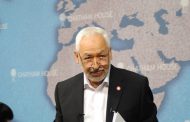Reza Parchizadeh, an internationally well-known political theorist and analyst of Indiana University of Pennsylvania, elaborates on the similarity between the Muslim Brotherhood and Iran’s regime. In an interview with THE REFERNCE Parchizadeh delves into the roots of the Iranian revolution and how the Brotherhood inspired many of its leaders in 1979.
- There is an ideological similarity between the Muslim Brotherhood and Iran. Can you explain it to me?
- They both see Islam as a total way of life; a phenomenon that we call Islamism. While the traditional Islam is a religion like others, and implementation is only within the scope of religion, Islamism seeks to dominate all aspects of life, including politics, culture, sociology, and even psychology. The Brotherhood has sought to do that for the past fifty years in Egypt and in some other Arab countries.The mullahs succeeded in doing that in Iran in 1979.
- What are the similarities between the thoughts of the Brotherhood and Khomeini? Do you think that the Brotherhood has a role in the Islamic revolution?
- Many prominent Iranian Islamist revolutionaries were closely affiliated with Muslim Brotherhood. Ibrahim Yazdi was a close follower of the Brotherhood in the US. He later became the first foreign minister of the Islamic Republic. Seyyed Mohammad Beheshti was familiar to the Brotherhood’s ideas in Germany. After the revolution, he became Chief Justice and head of the Supreme Court.
Khomeini himself was hugely under the influence of the Islamist discourse of the Brotherhood. It is certain that the Brotherhood actively assisted the revolutionaries in Iran during the 1979 Islamist takeover. Note that the Iranian regime is the biggest supporter of Hamas, which is an offshoot of the Brotherhood. It also supports the Qatari royal regime which has fishy relations with the Brotherhood.
- Did the ideas of Hassan al-Banna and Sayyid Qutb have a great influence on Iran and the revolution?
- Iran’s Islamists, including late Ayatollah Khomeini, were fascinated by the idea of Islam as a total way of life. If one reads Khomeini’s writings as well as other Iranian Islamists like Ali Shariati and Mohammad Hossein Tabatabaei, one can see that despite all their differences. They had a consensus that Islam must rule all aspects of human life. This was preponderantly under the influence of Banna and Qutb. Although the Shiite Iranian regime usually vocally denigrates the Sunni branches of Islam, it is greatly beholden to Sunnism via the Brotherhood ideology. That is one reason behind the fact that the Iranian regime can easily utilize the services of extremist Sunni organizations like al-Qaeda, Taliban and ISIS to its benefit.
- Is it possible to say that Iran has fully applied the Brotherhood’s doctrine in the country?
- Yes. The Islamists have applied Islam as a total way of life in Iran. Of course there has always been popular resistance, but the regime has managed to make its Islamist discourse hegemonic. Nevertheless, things are changing fast these days. The people of Iran are dissatisfied with the regime; so is the international community. A combination of domestic revolution and international pressure can bring the Islamist regime down on its knees and pave the way for a change in Iran. Then Islamism — as the state discourse — will be thrown into the trash can of history in Iran. The Middle East will see peace and prosperity only when Islamism is buried.







































admin in: How the Muslim Brotherhood betrayed Saudi Arabia?
Great article with insight ...
https://www.viagrapascherfr.com/achat-sildenafil-pfizer-tarif/ in: Cross-region cooperation between anti-terrorism agencies needed
Hello there, just became aware of your blog through Google, and found ...